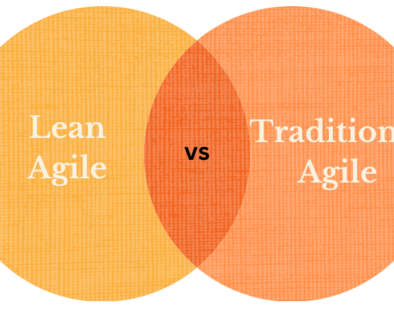How Do Agile Facilitation Techniques Shape the Role of a Facilitator in an Agile Team?
There are various agile facilitation techniques that shape the facilitator’s role within an agile team. The facilitator in an agile team is responsible for guiding the team through various agile processes using agile facilitation techniques. This role requires a deep understanding of agile values, principles, methodologies, strong interpersonal and communication skills. The facilitator in agile teams acts as a mediator, ensuring that team members effectively collaborate, communicate, and problem-solve. The facilitator can steer the team towards greater efficiency and productivity by employing agile facilitation techniques. In essence, the facilitator’s role in agile is intricately linked with applying agile facilitation techniques, as they serve as the linchpin for fostering a collaborative and high-performing agile team.
Understanding the Role of a Facilitator in Agile
 Understanding the Role of a Facilitator in Agile is crucial for an agile team’s success. The facilitator plays a pivotal role in ensuring effective collaboration and communication among team members. Agile facilitation techniques are essential for guiding the team through various processes such as sprint planning, daily stand-ups, retrospectives, other agile ceremonies and other events/meetings. The agile facilitator’s role involves creating a supportive and inclusive environment where team members can openly discuss challenges, solve problems, and make decisions collectively.
Understanding the Role of a Facilitator in Agile is crucial for an agile team’s success. The facilitator plays a pivotal role in ensuring effective collaboration and communication among team members. Agile facilitation techniques are essential for guiding the team through various processes such as sprint planning, daily stand-ups, retrospectives, other agile ceremonies and other events/meetings. The agile facilitator’s role involves creating a supportive and inclusive environment where team members can openly discuss challenges, solve problems, and make decisions collectively.
Agile facilitation techniques empower the agile facilitator to moderate discussions, encourage participation from all team members, and navigate conflicts or obstacles that may arise during the project. The agile facilitator embraces a servant-leadership approach, focusing on removing impediments and fostering a culture of continuous improvement within the team. The agile facilitator role is centered on enabling the team to maximize their productivity and deliver high-quality solutions.
Core Agile Facilitation Techniques
The role of a facilitator in an agile team is crucial for ensuring that the team stays on track and focused. Some core agile facilitation techniques include:
- Establishing a collaborative environment: The facilitator in an agile team should promote a collaborative environment where team members feel comfortable sharing their ideas and concerns. This can be done through activities such as team-building exercises and open discussions.
- Conducting effective meetings: The facilitator should be skilled in conducting efficient and productive discussions. This includes setting clear agendas, managing time effectively, and encouraging active participation from all team members.
- Removing obstacles: Agile facilitators are vital in identifying and removing barriers that impede the team’s progress. This involves actively listening to team members’ concerns and working with them to find solutions.
- Facilitating decision-making: The facilitator in an agile team helps guide the team through the decision-making process, ensuring that decisions are made collaboratively and with the project’s best interests in mind.
By employing some of these agile facilitation techniques, the facilitator in an agile team can ensure that the team remains focused, productive, and aligned with the overall project goals.
The Evolving Role of the Facilitator in Agile Teams
The success of agile teams relies heavily on the facilitator’s ability to navigate and guide the team through various challenges. The role of the facilitator in agile teams has evolved significantly, taking on more responsibilities and requiring a diverse set of skills. Agile facilitation techniques are instrumental in ensuring effective team collaboration, communication, and problem-solving. The facilitator in an agile team acts as a catalyst for productivity and is pivotal in removing obstacles and fostering a culture of continuous improvement.
In today’s dynamic work environment, the facilitator in agile teams plays a multifaceted role that demands versatility and adaptability. Their role encompasses facilitating meetings and decision-making processes, coaching team members, resolving conflicts, and promoting a positive team dynamic. An agile facilitator’s role goes beyond just implementing agile facilitation techniques; it involves promoting a mindset shift and helping team members embrace the principles of agility. As the agile landscape continues to evolve, the role of the facilitator in agile will undeniably remain crucial in steering teams toward success.


